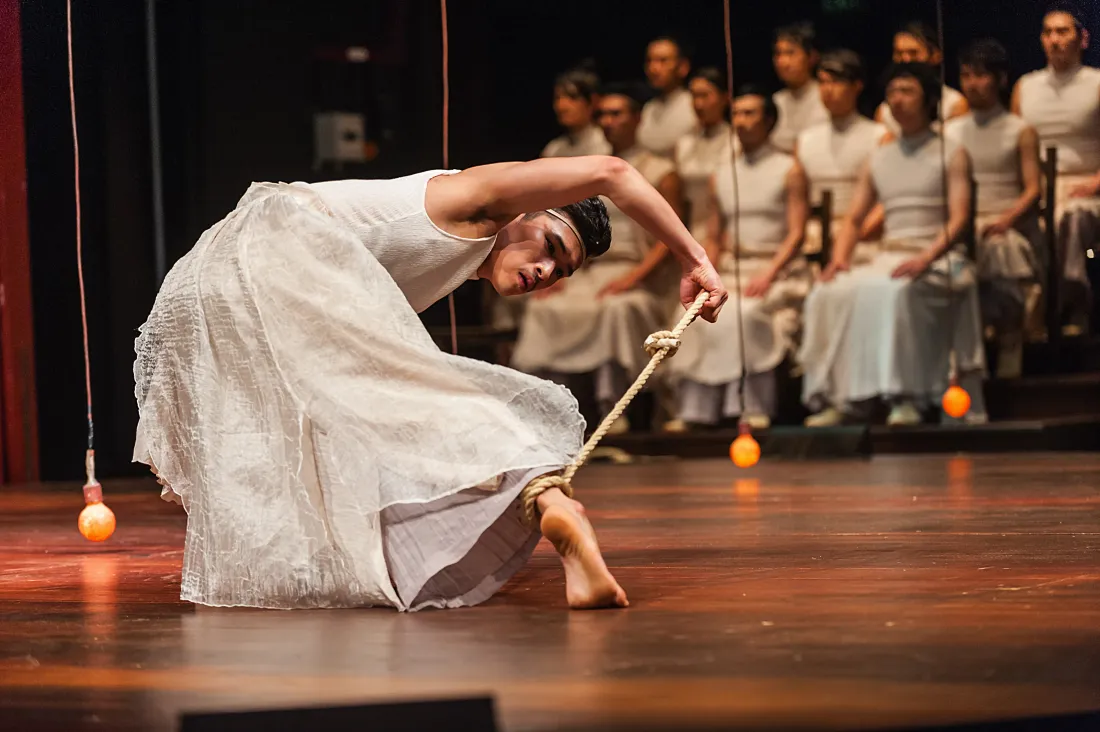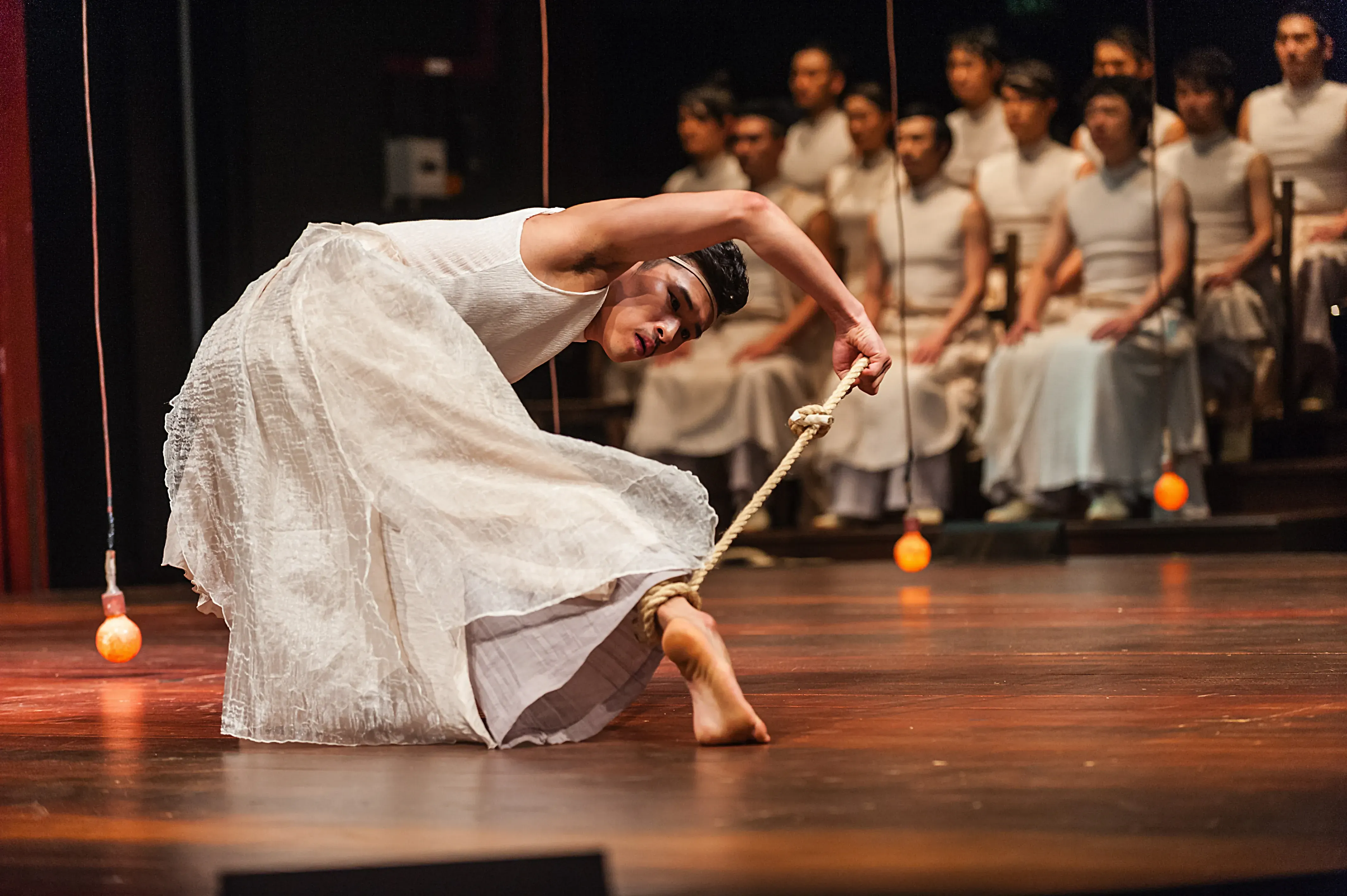Festival reflections
Written by


It’s been more than a week since Auckland Arts Festival (AAF) folded up its magic but the time and space have been good to reflect on this year’s artistic offerings.
Let’s be upfront here – I didn’t get to see everything in the festival and in fact, hats off to those who did manage to catch the majority of the shows. This year’s festival experience for me was focused mainly on theatre and dance, and including the James Plays trilogy, I feel very fortunate to have caught 10 very different festival works.
Equally my experience was shaped by the fact that I had a chance to korero with some fabulous artists. These included Desiree Burch (Tar Baby), the knowledgeable and talented Han Areum (The Chorus; Oedipus) and the delightful Danny Ronaldo (La Cucina Dell’arte).
Closer to home, I had a chance to korero with Kali Kopae (Not in our Neighbourhood) and Ahi Karunaharan (TEA), though I missed seeing TEA as it was on at the same time as the James Plays. Aside from these productions I reviewed Marama and Changes for Radio New Zealand – a fresh way for me to reflect on a work. To top off my 10, my good friend and theatrewife Nathan Joe offered to take me to see Waves which hails from across the ditch; and so my theatrical decathlon was completed.
Reflecting back with all the privileges of hindsight I feel lucky to have had such a rich festival experience – but as always it’s not so much the works on the stage but the conversations around the works that is fascinating.
It’s the story of watching a strong female performer do it loud and proud and knowing that while the lights are focused squarely on her and a few hapless volunteers making vague attempts to pick up rice there are a bunch of my friends weeping in the corner. It’s the story of feeling a young woman, sitting spellbound beside me as an epic drama unfolded in her mother tongue, put her arms around me and confess she had never felt so much emotion in her life and I, a stranger, held her. It’s the story of knowing that beneath the canvas of a family tent where two brothers spin bowls and toss pizza dough the ghosts of their parents haunt that world. Those are the stories that linger on my lips, the ones that seep through my memories and colour my own experience.
Equally, there are others of a different texture. The robust discussions following Not in our Neighbourhood and Marama often saw divided opinions and these were debated, analysed, questioned and explored - quite often against the growing dampness of the wicker furniture in the festival garden and suitably accompanied by swilling glasses of sav and merlot.
Authenticity was an oft repeated phrase. The versions of ourselves that we know and share, the recognition of self, the role of women and their strength and the portrayal; was this simply art pour l’art or drama with agency and urgency?
Of course, it’s easy smush all these ideas in a few sentences but to tease them out, complex ideas articulated simply and provocatively – such were the hallowed conversations in the garden. It was also where I found much of the music. Performed by talented, easy-going melody makers who created an ambience that I wish we could have all year round. It was into the garden with its hot pink worker bees zipping around that I and my theatrewives would tumble in between the James Plays. Catching up with old friends and more new ones as I confessed that these hoary and expletive riddled tragic-dramas were as entertaining as any historical telly drama - plus they offered a fine opportunity to tune your ear to the Scottish brogue. A few minutes walk away from the Spiegeltent, Q theatre and Aotea Square I found Changes. This too caused a stir, not so much for the work but the eviction of a dance matua halfway through for calling out his unadulterated feelings – irrespective of opinion, it certainly added fine value to the evening. Waves was a good little piece of theatre yet once I found out that Elizabeth Moncello did not invent the butterfly stroke nor win at the Berlin Olympics and her story was all fabrication – disappointment more than anything else washed over me as google once again burst my bubble of illusion.
But having observed, engaged and invested in festivals in New Zealand for the past 18 months it’s an interesting place to be right here in March 2016. Looking back to my first reflection on Edinburgh in September 2014, and following a year of festivals around the country in 2015, it feels we are at a special place right here, right now.
AAF made the decision to go annually. There is plenty of talk of camaraderie and good spirits as it rolls close to the same time as the NZ Festival in Wellington and many of the shows are shared with great magnanimity. However, how successful and indeed sustainable is it as an annual event? Will its works continue to grow new audiences and new platforms for showcasing this work? How accessible will this festival become as it slowly but surely becomes one of the hallmarks of a superdiverse city? How will a multi-generational and multi-lingual audience find new ways to access works both in the CBD but also beyond the familiar venues?
Beyond the festival itself there are other questions. Looking at this particular sample of work (which of course I acknowledge doesn’t take into full account all the theatre and dance let alone all the other art forms) is the question of where are we placed as New Zealanders in creating and responding to work? For example, the RAW readings are an absolute highlight of the festival indicative of the potential of New Zealand theatre and the direction we could be heading.
We live in Auckland, a city of many histories, many languages, many stories. We live in a cosmopolitan city that deserves a representation of its riches – both on stage and backstage. It’s a challenge to which I do believe the festival will rise; and equally, we all will be expected to as well.
Not just artists but audiences. Not just the programmers but the punters.
It really does feel that we’re approaching that tipping point – and in the future, maybe even ten years from now, we might see a National Theatre of New Zealand telling our stories to our people on our stages.